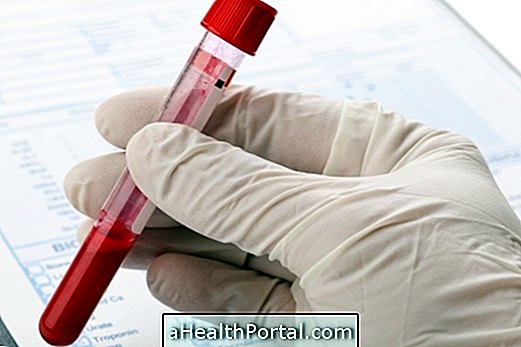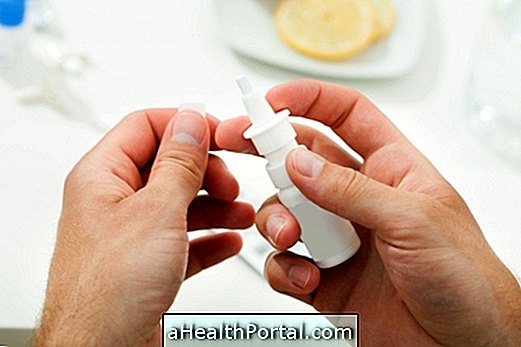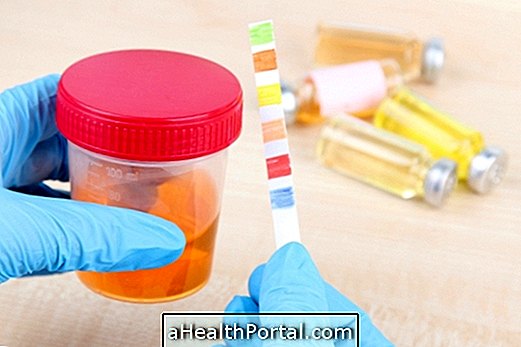After unprotected intercourse there is always a risk of getting pregnant, especially if the woman was within her fertile time. After conception the body takes about 10 to 20 days to give the first signs that the pregnancy began, and it is in that period that the woman can do some home tests that can confirm that she is actually pregnant.
Some examples of home pregnancy testing are:
1. Pregnancy Test Online
A good pregnancy test that can be done at home, is this online test, which we elaborate based on some symptoms that you can present. Answer the following questions and know your chances of being pregnant or not:
- 1
- 2
- 3
- 4
- 5
- 6
- 7
- 8
- 9
- 10
Find out if you are pregnant
Start the test


- Yes
- Not

- Yes
- Not

- Yes
- Not

- Yes
- Not

- Yes
- Not

- Yes
- Not

- Yes
- Not

- Yes
- Not

- Yes
- Not

- Yes
- Not
2. Pregnancy test, from pharmacy
Of all the pregnancy tests that can be done at home, the most reliable is the pregnancy test that is bought at the pharmacy, as it measures the presence of the hormone beta HCG in the woman's urine, a hormone that is only produced in cases of pregnancy .
But despite being a reliable test, the pharmacy test may not detect pregnancy when it is performed too early or when it is done in the wrong way. The ideal time to take the pharmacy pregnancy test is when the menstrual delay is 7 days or more. However, it can already give a positive result from the 1st day of the menstrual delay. Check out how to do it.

Other alleged pregnancy tests are:
3. Sanitary water test
In a plastic container add bleach and urine and if it changes color, bubbles or brews, it is a sign that the test is positive.
- Why it does not work: This test does not take into account the amount of bleach and can give 'positive' using urine from men or women.
4. Boiled urine test
Placing the urine to boil in an aluminum pan and raising milk-like boiling cream or white foam, the test is positive.
- Because it does not work: To boil the urine must be very liquid, due to the consumption of large amounts of water, so it is enough that the woman has taken more water during the day so that the result is 'positive'.
5. Testing the Vinegar
In a container, mix vinegar and urine and if the mixture changes color, the result is positive for pregnancy. The procedure is the same for the test using chlorine.
- Because it does not work: There is usually no reaction when mixing vinegar with urine because the two compositions are acidic and therefore the test is not reliable, presenting the same result in men.

6. Needle Testing
After placing a new needle inside a plastic container along with the urine, wait 8 hours. If it changes color, turning black, the result is positive for pregnancy, when this does not happen the result is negative.
- Why it does not work: The more concentrated the urine is, the greater the possibility of the needle turning black, but in most cases it takes more than a few hours for this to happen.
7. Swab test
Insert a properly cleaned swab into the vagina until it reaches the uterus, and rub lightly into the uterus. If the swab comes out clean, with no secretion, there is a chance of 'being pregnant' because there is no sign of menstruation.
- Why it does not work: The swab may contain vaginal discharge and confuse the result. In addition, the use of the swab may injure the cervix, depending on how the test is done.
Although these tests are popular they are all flawed and have no scientific proof of their effectiveness. So the most advised is to do a pregnancy test that is bought in the pharmacy or what is done in the laboratory, with a blood sample, because these are reliable and the result leaves no doubt.
























